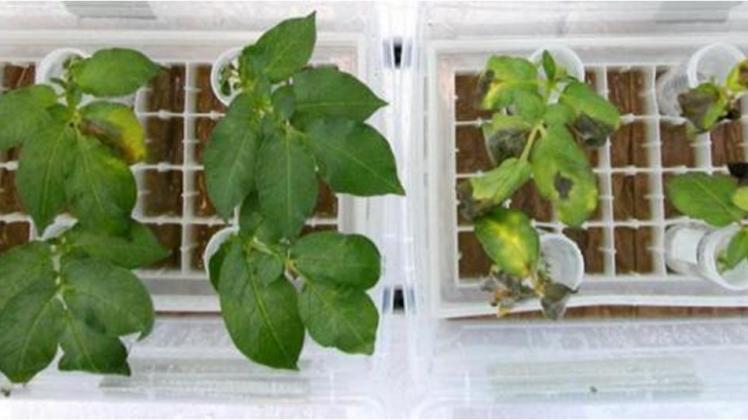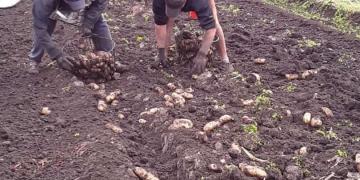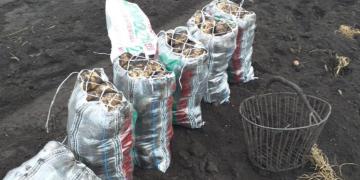Irlanda: Saskatoon discovery could have prevented Irish Potato Famine
A Saskatoon research scientist has discovered some good bacteria found in Saskatchewan and Alberta soils that could have stopped the Irish Potato Famine.

Sue Boyetchko and her team are taking that naturally-occurring bacteria, multiplying them in a lab and applying the bacteria to potato plants and potatoes themselves.
"That’s what we are trying to do is develop this into a product so that farmers or home gardeners can apply it at the right place, at the right time in order to control this disease," she said.During the Irish Potato Famine, about one million people died, while another million left Ireland after potato crops were infected with late blight in the 1840s.Boyetchko said many of the potatoes in Ireland were infected while they were stored and stockpiled.
Her team has had a 90 per cent success rate with controlling late blight both on potato plants while the potatoes are growing and also putting the bacteria on healthy, harvested potatoes to prevent the fungus from forming.She said this discovery and further research could also help cut down on the harsh chemicals some farmers have to use now to control late blight."During an outbreak, under optimum conditions for the disease, 12-15 applications of a chemical fungicide (may be required) in one growing season," she said. "The idea is to have more of a green alternative, something that is safe."
A side-by-side comparison of potato plants with late blight. The plants on the left were treated with the naturally-occurring bacteria and the ones on the right were not. Photo supplied by Sue Boyetchko.That’s good news for Elly van der Veldt who is one of the owners of the Dutch Potato Farm near Outlook.
She and her husband came to Saskatchewan from the Netherlands 35 years ago and along with their son, grow about 6,200 acres of potatoes.Late blight has been an issue on her farm over the past few years and she has had to spray chemicals about once a week to control it.
"We need better, easier and natural chemicals that’s for sure, because if this is coming back every year, it might come back stronger. We don’t like to spray," van der Veldt said.Boyetchko said late blight is an aggressive disease that farmers across the globe deal with."It’s a fungus very ubiquitous around the world. It’s called Phytophthora infestans and it means ’the crop destroyer.’
Once you find it in your field, you pretty much have to get on top of it," Boyetchko said.Joel VanderSchaaf works with Tuberosum Technologies Inc., a potato research and development company and also helps with the family potato farm near Outlook.
The farm includes 300 acres of organic potatoes that were hit with late blight last year and some of the crop was lost."We do some organic production and that’s one of the major constraints is keeping control of late blight," he said.VanderSchaaf said a product with a naturally-occurring bacteria would be helpful for the organic part of their farm as well as cutting down on the routine use of chemicals on the other acres."Typically, a farmer, just to be on the safe side, has to spray and has to stay ahead of it like it’s going to be a blight year every year," he said.Boyetchko and her team with Agriculture and Agri-Food Canada are on the third year of this research project and she is now working on how to mass-produce the bacteria.
She said it will still be a few years before the product could be commercially available and they are currently looking for investors and industry input.About $1 billion is spent every year on fungicides to control late blight around the world and crop losses due to late blight can be as high as $3-5 billion a year.In Saskatchewan, the Ministry of Agriculture said there are about 35 potato producers in the province each with an average yield of 13 tonnes of potatoes per acre.
Fuente: http://www.ckom.com/story/saskatoon-discovery-could-have-prevented-irish-potato-famine/559582







